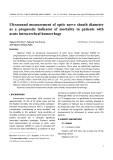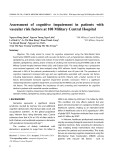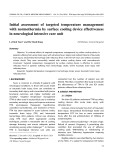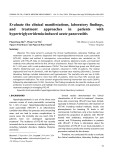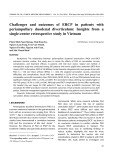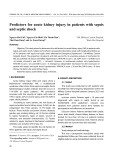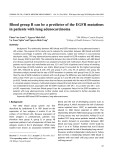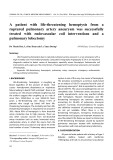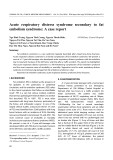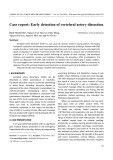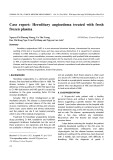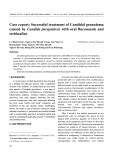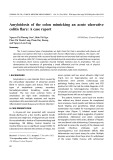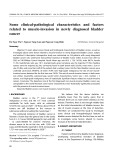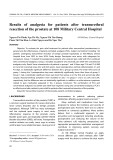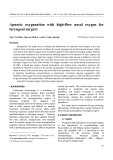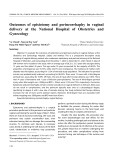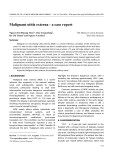
JOURNAL OF 108 - CLINICAL MEDICINE AND PHARMACY Vol. 19 - Dec./2024 DOI: https://doi.org/10.52389/ydls.v19ita.2504
30
Predictors for acute kidney injury in patients with sepsis
and septic shock
Nguyen Hai Ghi
1
, Nguyen Gia Binh
2
, Do Thanh Hoa
1
,
Thai Dam Dung1 and Le Xuan Duong1*
1108 Military Central Hospital,
2
Bach Mai Hospital
Summary
Objective: This study aimed to determine the risk factors for acute kidney injury (AKI) in patients with
sepsis and septic shock. Subject and method: A prospective descriptive study with longitudinal follow-up
of 201 patients with sepsis and septic shock admitted to Emergency Department - 108 Military Central
Hospital. Result: The proportion of patients with AKI was 64.7%. In univariate analysis of risk factors for
AKI, six potential risk factors identified: Hypertension, APACHE II score ≥ 20, SOFA score > 8, MOD score
>8, lactate ≥2mmol/L, and HCO3- < 15mmol/L. However, in multivariate analysis, only hypertension,
APACHE II score ≥ 20, and SOFA score > 8 emerged as independent risk factors for AKI. Conclusion: In
patient with sepsis and septic shock, hypertension, APACHE II score ≥ 20 and the SOFA score > 8 were
the key risk factors for acute kidney injury.
Keywords: Sepsis, acute kidney injury, risk factor.
I. BACKGROUND
Acute kidney injury (AKI) and sepsis share a
bidirectional relationship. AKI, a multifactorial
syndrome, often stems from sepsis and septic shock.
Epidemiological studies indicate that AKI occurs in
11%–60% of septic patients1. AKI prevalence
increases with the severity of sepsis, with rates of
19% in sepsis, 23% in severe sepsis, and 51%–64% in
septic shock patients2.
According to some authors, the risk factors of
sepsis-associated acute kidney injury (S-AKI) can be
categorized into three groups: (1) Pre-septic risk
factors: These include concurrent chronic diseases,
gender, age, smoking history, etc. (2) Factors related
to sepsis: Symptoms, types of sepsis, sources of
infection, and bacterial characteristics. (3) Factors
related to sepsis treatment: Mechanical ventilation,
antibiotic use, duration of ICU stay, etc.
This study aimed to identify the risk factors for
AKI in patients with sepsis and septic shock.
Received: 16 October 2024, Accepted: 20 November 2024
*Corresponding author: duongicu108@gmail.com -
108 Military Central Hospital
II. SUBJECT AND METHOD
2.1. Subject
This study was conducted on 201 patients who
enrolled from the Emergency Department at the 108
Military Central Hospital between January 2021 and
August 2023.
Inclusion criteria: Patients aged ≥ 18 years and
diagnosed with sepsis or septic shock as per
SCCM/ESICM 2016 guidelines3. Consent was
obtained from patients and/or their families for
participation and adherence to treatment.
Exclusion criteria: Patients admitted with cardiac
arrest, brain death, chronic kidney disease, or those
treated for less than 24 hours or patients lacking
proper monitoring/ laboratory tests. Patients whose
families did not consent were also excluded.
2.2. Method
Study design and methodology.
This was a prospective descriptive study with
longitudinal follow-up. Data were collected from all
eligible patients using standardized medical records.





